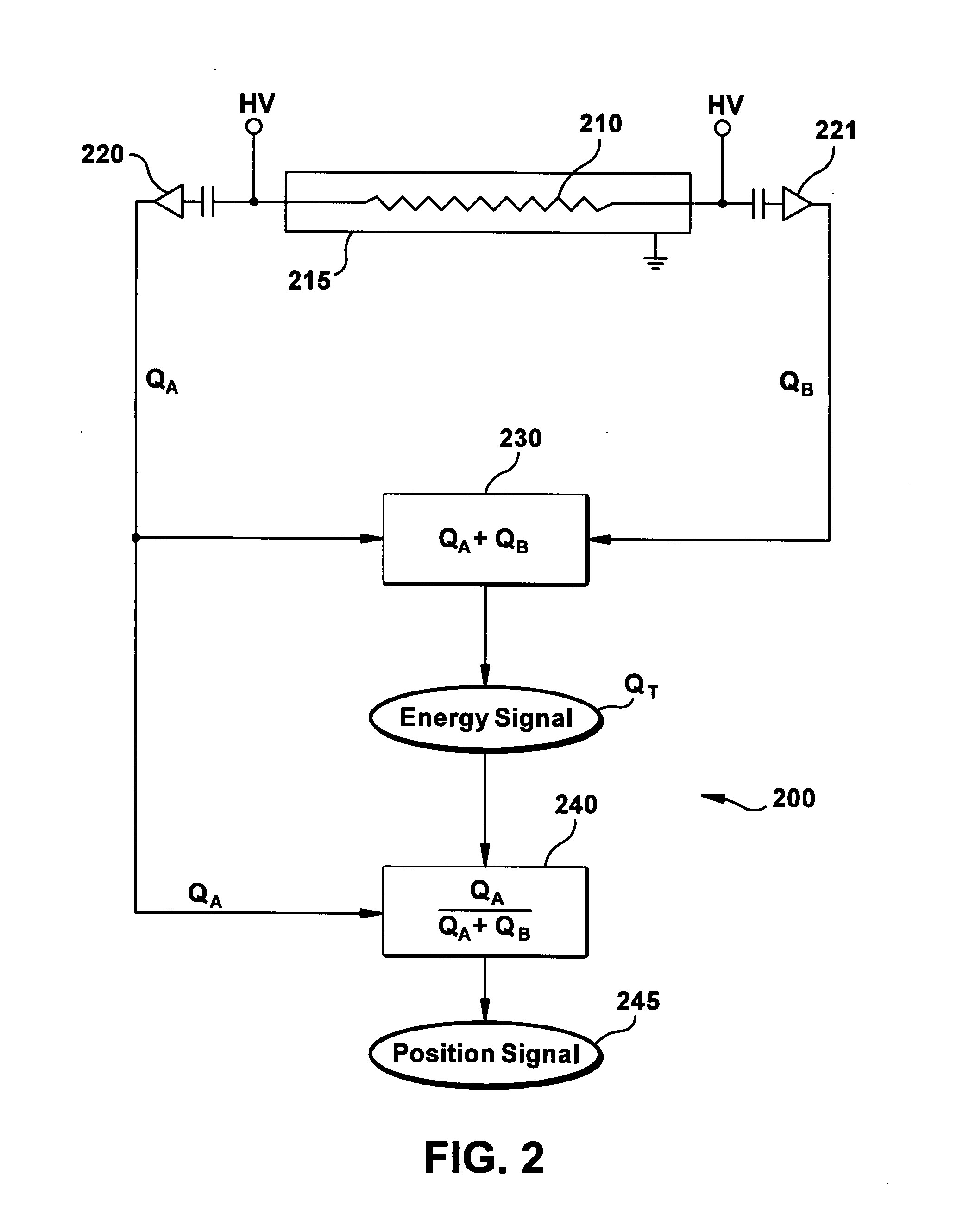Radiation detector employing amorphous material
a technology of amorphous materials and radiation detectors, applied in the field of radiation detectors, can solve the problems of corrosive environments, low or high frequency vibration, extreme low and high temperatures of the detector, and the inability of the anode wire to survive in these environments, and achieve the effect of reducing the size of the anode wire, and reducing the cost of the devi
- Summary
- Abstract
- Description
- Claims
- Application Information
AI Technical Summary
Benefits of technology
Problems solved by technology
Method used
Image
Examples
Embodiment Construction
[0012]Radiation detectors can comprise many different types of detectors. A proportional counter is one example of a radiation detector that can be used for neutron detection. Radiation detectors come in many varieties, such as, sealed tube counters, windowless flow counters, pancake detectors, single wire detectors, multi-wire detectors, gas electron multiplier detectors, parallel plate avalanche counters, position sensitive proportional counters, and gas proportional scintillation counters, to name a few. Radiation detectors are often substantially cylindrical in cross-section, but they can also be elliptical, near elliptical, and rectangular in cross section. Radiation detectors can be used to detect many types of radiation, including but not limited to, charged particulate radiation (e.g., fast electrons, beta particles, heavy charged particles, alpha particles, or protons) and / or uncharged particles (e.g., electromagnetic radiation or neutrons). Hereinafter, the term radiation ...
PUM
| Property | Measurement | Unit |
|---|---|---|
| tensile strength | aaaaa | aaaaa |
| tensile strength | aaaaa | aaaaa |
| diameter | aaaaa | aaaaa |
Abstract
Description
Claims
Application Information
 Login to View More
Login to View More - R&D
- Intellectual Property
- Life Sciences
- Materials
- Tech Scout
- Unparalleled Data Quality
- Higher Quality Content
- 60% Fewer Hallucinations
Browse by: Latest US Patents, China's latest patents, Technical Efficacy Thesaurus, Application Domain, Technology Topic, Popular Technical Reports.
© 2025 PatSnap. All rights reserved.Legal|Privacy policy|Modern Slavery Act Transparency Statement|Sitemap|About US| Contact US: help@patsnap.com



